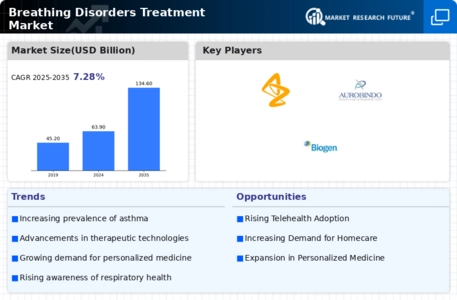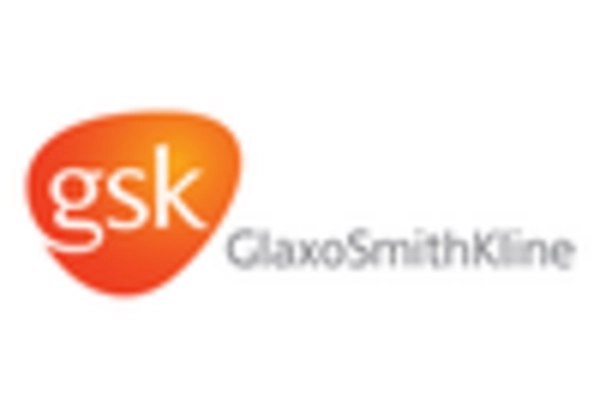-
Definition
-
Scope of the Study
- Research Objective
- Assumptions
- Limitations
-
Introduction
-
Primary Research
-
Secondary research
-
Market Size Estimation
-
Drivers
-
Restrains
-
Opportunities
-
Challenges
-
Porters Five Forces Analysis
- Bargaining Power of Suppliers
- Bargaining Power of Buyers
- Threat of New Entrants
- Threat of Substitutes
- Intensity of Rivalry
-
Value Chain Analysis
-
Chapter 6. Global Breathing Disorders Treatment Market, by Drug Type
-
Introduction
-
Antibiotics
-
Non-Steroidal Anti-Inflammatory Drug (NSAIDS)
-
Cough Suppressant
-
Nasal Decongestant
-
Others
-
Chapter 7. Global Breathing Disorders Treatment Market, by Indication
-
Introduction
-
Chronic Obstructive Pulmonary Disease (COPD)
-
Asthma
-
Allergic Rhinitis
-
Pulmonary Hypertension
-
Cystic Fibrosis (CF)
-
Idiopathic Pulmonary Fibrosis
-
Others
-
Chapter 8. Global Bipolar Disorders and Treatment Market, by End User
-
Introduction
-
Hospitals and Clinics
-
Retail Pharmacies
-
Online Pharmacies
-
Chapter 9. Global Breathing Disorders Treatment Market, by Region
-
Introduction
-
America
- North America
- Latin America
-
Europe
- Western Europe
- Eastern Europe
-
Asia-Pacific
- Japan
- China
- India
- Australia
- Republic of Korea
- Rest of Asia-Pacific
-
Middle East & Africa
- Middle East
- Africa
-
Chapter 10. Company Landscape
-
Introduction
-
Market Share Analysis
-
Key Development & Strategies
-
Chapter 11 Company Profiles
-
AstraZeneca
- Company Overview
- Type Overview
- Financials Overview
- Key Developments
- SWOT Analysis
-
Medtronic plc
- Company Overview
- Type Overview
- Financial Overview
- Key Developments
- SWOT Analysis
-
GlaxoSmithKline Plc.
- Company Overview
- Type Overview
- Financial Overview
- Key Development
- SWOT Analysis
-
Merck Sharp & Dohme Corp.
- Company Overview
- Segment Overview
- Financial Overview
- Key Development
- SWOT Analysis
-
F. Hoffmann-La Roche Ltd
- Company Overview
- Type Overview
- Financial overview
- Key Developments
- SWOT Analysis
-
Novartis AG
- Company Overview
- Type Overview
- Financial Overview
- Key Developments
- SWOT Analysis
-
Abbott
- Overview
- Type Overview
- Financial Overview
- Key Developments
- SWOT Analysis
-
Dr. Reddy’s Laboratories
- Overview
- Type Overview
- Financials
- Key Developments
- SWOT Analysis
-
Amgen
- Overview
- Type Overview
- Financials
- Key Developments
- SWOT Analysis
-
Aurobindo Pharma.
- Overview
- Type Overview
- Financials
- Key Developments
- SWOT Analysis
-
Bayer AG
- Overview
- Type Overview
- Financials
- Key Developments
- SWOT Analysis
-
Biogen
- Overview
- Type Overview
- Financials
- Key Developments
- SWOT Analysis
-
Others
-
Chapter 12. Appendix
-
LIST OF TABLES
-
Global Breathing Disorders Treatment Synopsis, 2020-2027
-
Global Breathing Disorders Treatment Market Estimates and Forecast, 2020-2027, (USD Million)
-
Global Breathing Disorders Treatment Market, by Region 2020-2027, (USD Million)
-
Global Breathing Disorders Treatment Market, by Drug Type 2020-2027, (USD Million)
-
Global Breathing Disorders Treatment Market, by Indication 2020-2027, (USD Million)
-
Global Breathing Disorders Treatment Market, by End User 2020-2027, (USD Million)
-
North America: Breathing Disorders Treatment Market, by Drug Type 2020-2027, (USD Million)
-
North America: Breathing Disorders Treatment Market, by Indication 2020-2027, (USD Million)
-
North America: Breathing Disorders Treatment Market, by End User 2020-2027, (USD Million)
-
US: Breathing Disorders Treatment Market, by Drug Type 2020-2027, (USD Million)
-
US: Breathing Disorders Treatment Market, by Indication 2020-2027, (USD Million)
-
US: Breathing Disorders Treatment Market, by End User 2020-2027, (USD Million)
-
Canada: Breathing Disorders Treatment Market, by Drug Type 2020-2027, (USD Million)
-
Canada: Breathing Disorders Treatment Market, by Indication 2020-2027, (USD Million)
-
Canada: Breathing Disorders Treatment Market, by End User 2020-2027, (USD Million)
-
Latin America: Breathing Disorders Treatment Market, by Drug Type 2020-2027, (USD Million)
-
Latin America: Breathing Disorders Treatment Market, by Indication 2020-2027, (USD Million)
-
Latin America: Breathing Disorders Treatment Market, by End User 2020-2027, (USD Million)
-
Europe: Breathing Disorders Treatment Market, by Drug Type 2020-2027, (USD Million)
-
Europe: Breathing Disorders Treatment Market, by Indication 2020-2027, (USD Million)
-
Europe: Breathing Disorders Treatment Market, by End User 2020-2027, (USD Million)
-
Western Europe: Breathing Disorders Treatment Market, by Drug Type 2020-2027, (USD Million)
-
Western Europe: Breathing Disorders Treatment Market, by Indication 2020-2027, (USD Million)
-
Western Europe: Breathing Disorders Treatment Market, by End User 2020-2027, (USD Million)
-
Eastern Europe: Breathing Disorders Treatment Market, by Drug Type 2020-2027, (USD Million)
-
Eastern Europe: Breathing Disorders Treatment Market, by Indication 2020-2027, (USD Million)
-
Eastern Europe: Breathing Disorders Treatment Market, by End User 2020-2027, (USD Million)
-
Asia-Pacific: Breathing Disorders Treatment Market, by Drug Type 2020-2027, (USD Million)
-
Asia-Pacific: Breathing Disorders Treatment Market, by Indication 2020-2027, (USD Million)
-
Asia-Pacific: Breathing Disorders Treatment Market, by End User 2020-2027, (USD Million)
-
Middle East & Africa: Breathing Disorders Treatment Market, by Drug Type 2020-2027, (USD Million)
-
Middle East & Africa: Breathing Disorders Treatment Market, by Indication 2020-2027, (USD Million)
-
Middle East & Africa: Breathing Disorders Treatment Market, by End User 2020-2027, (USD Million)
-
LIST OF FIGURES
-
Research Process
-
Segmentation for Global Breathing Disorders Treatment Market
-
Segmentation Market Dynamics for Global Breathing Disorders Treatment Market
-
Global Breathing Disorders Treatment Market Share, by Drug Type, 2020
-
Global Breathing Disorders Treatment Market Share, by Indication, 2020
-
Global Breathing Disorders Treatment Market Share, by End User, 2020
-
Global Breathing Disorders Treatment Market Share, by Region, 2020
-
North America: Breathing Disorders Treatment Market Share, by Country, 2020
-
Europe: Breathing Disorders Treatment Market Share, by Country, 2020
-
Asia-Pacific: Breathing Disorders Treatment Market Share, by Country, 2020
-
Middle East & Africa: Breathing Disorders Treatment Market Share, by Country, 2020
-
Global Breathing Disorders Treatment Market: Company Share Analysis, 2020 (%)
-
Medtronic plc: Key Financials
-
Medtronic plc: Segmental Revenue
-
Medtronic plc: Geographical Revenue
-
Novartis AG: Key Financials
-
Novartis AG: Segmental Revenue
-
Novartis AG: Geographical Revenue
-
AstraZeneca: Key Financials
-
AstraZeneca.: Segmental Revenue
-
AstraZeneca: Geographical Revenue
-
Merck: Key Financials
-
Merck: Segmental Revenue
-
Merck: Geographical Revenue
-
GlaxoSmithKline: Key Financials
-
GlaxoSmithKline: Segmental Revenue
-
GlaxoSmithKline: Geographical Revenue
-
Abbott: Key Financials
-
Abbott: Segmental Revenue
-
Abbott: Geographical Revenue
-
Dr. Reddy’s Laboratories: Key Financials
-
Dr. Reddy’s Laboratories: Segmental Revenue
-
Dr. Reddy’s Laboratories: Geographical Revenue
-
Amgen: Key Financials
-
Amgen: Segmental Revenue
-
Amgen: Geographical Revenue
-
Pfizer Inc.: Key Financials
-
Pfizer Inc.: Segmental Revenue
-
Pfizer Inc.: Geographical Revenue
-
Aurobindo Pharma.: Key Financials
-
Aurobindo Pharma.: Segmental Revenue
-
Aurobindo Pharma.: Geographical Revenue
-
Bayer AG: Key Financials
-
Bayer AG.: Segmental Revenue
-
Bayer AG.: Geographical Revenue
-
Biogen: Key Financials
-
Biogen: Segmental Revenue
-
Biogen: Geographical Revenue









Leave a Comment